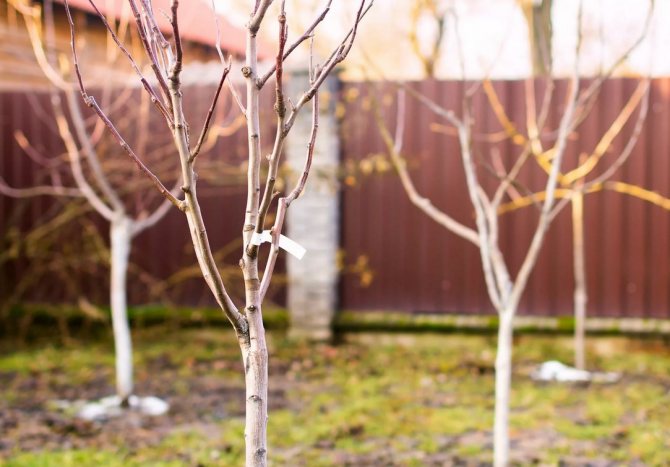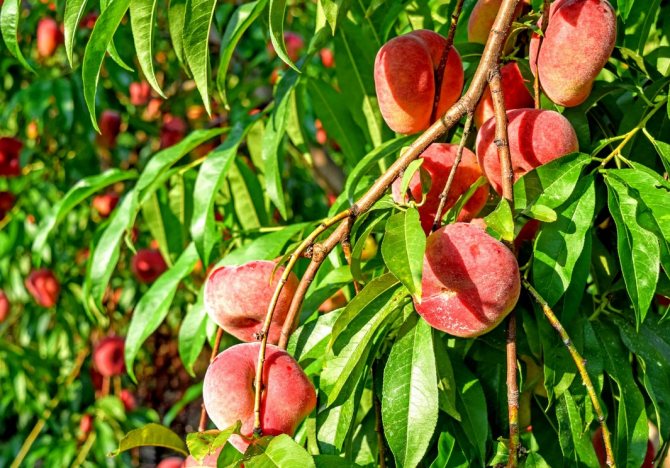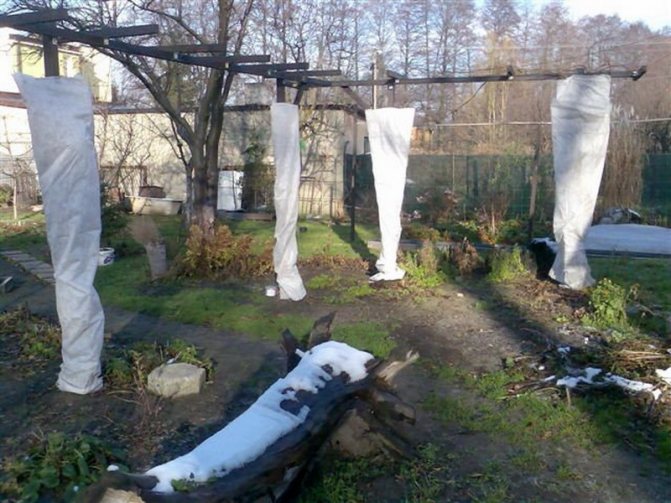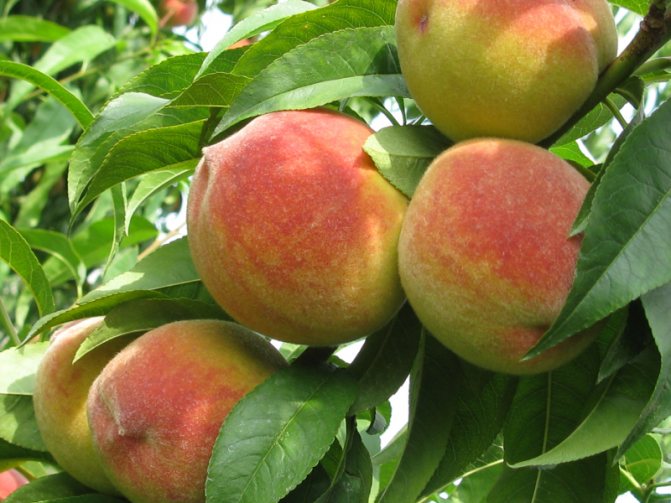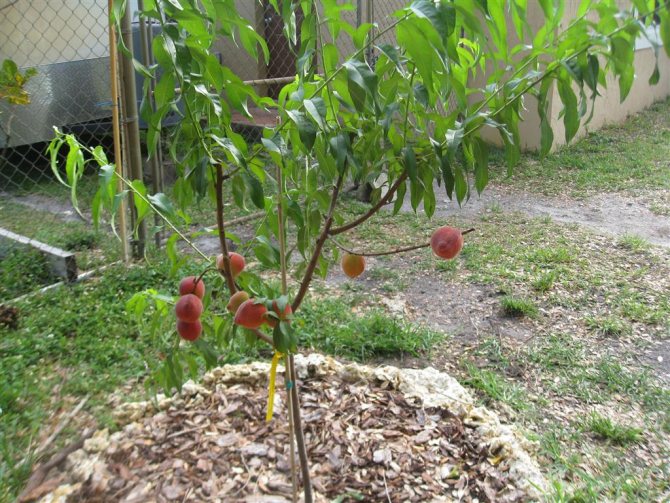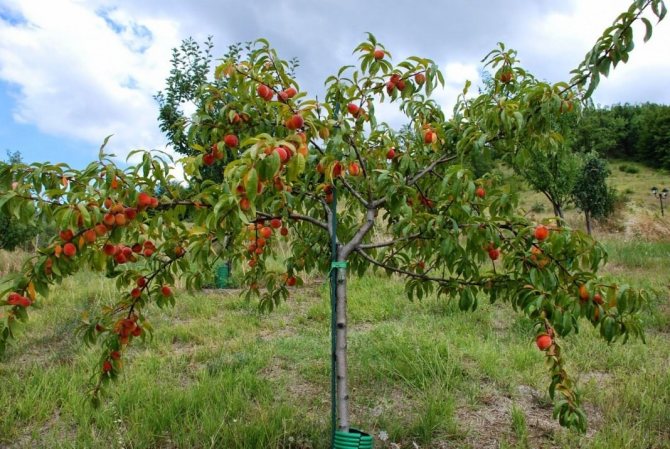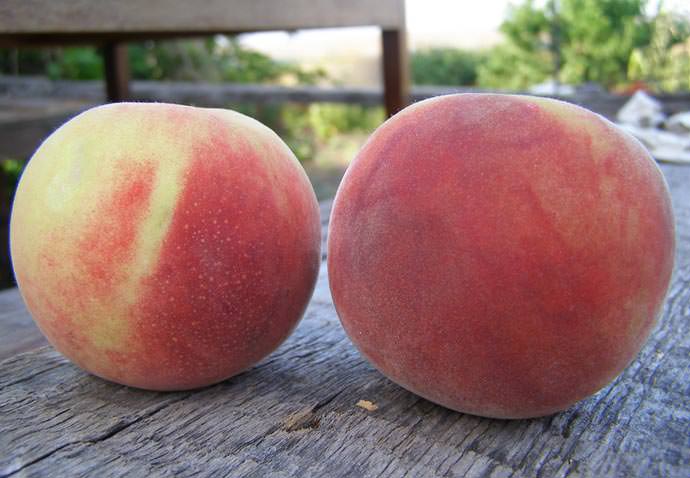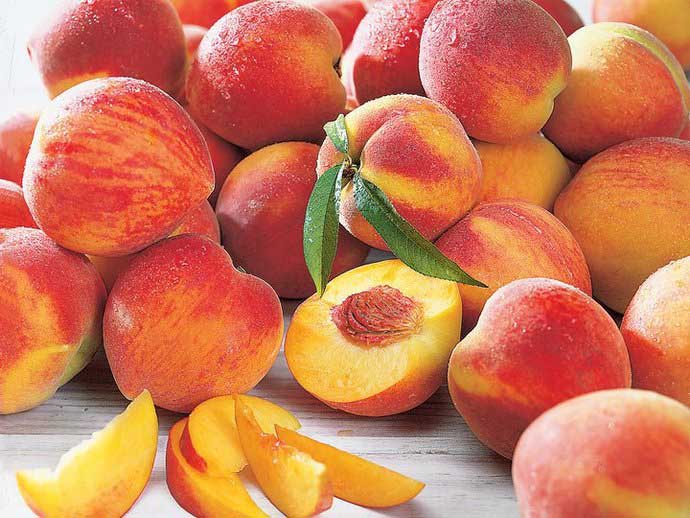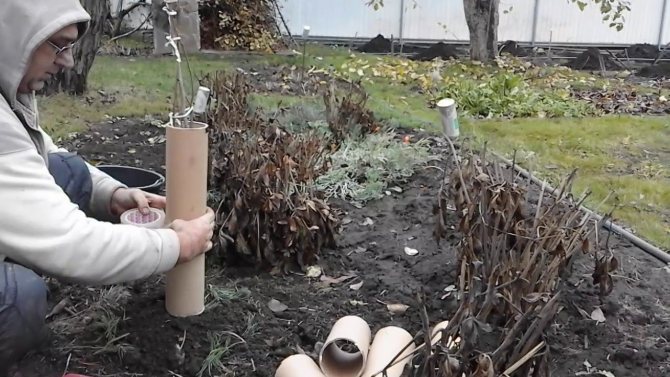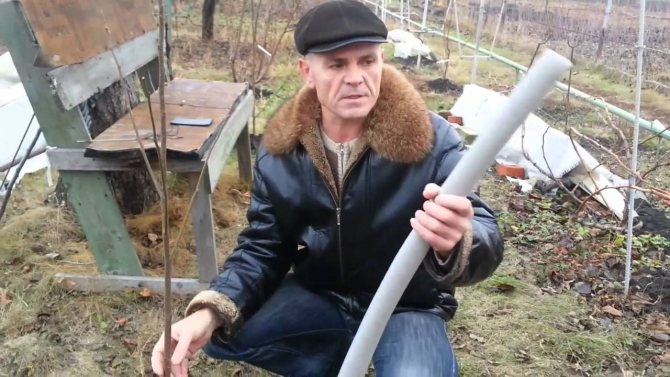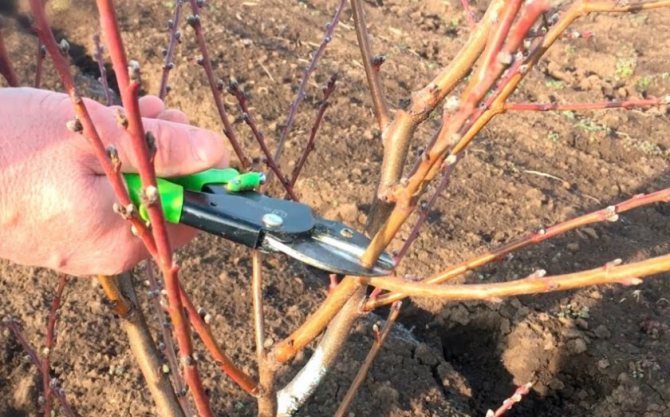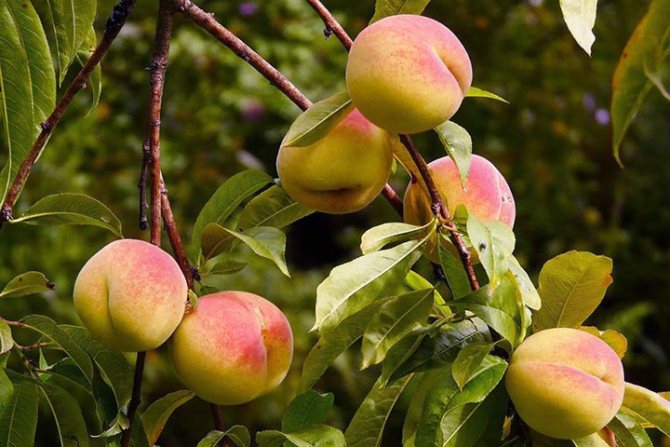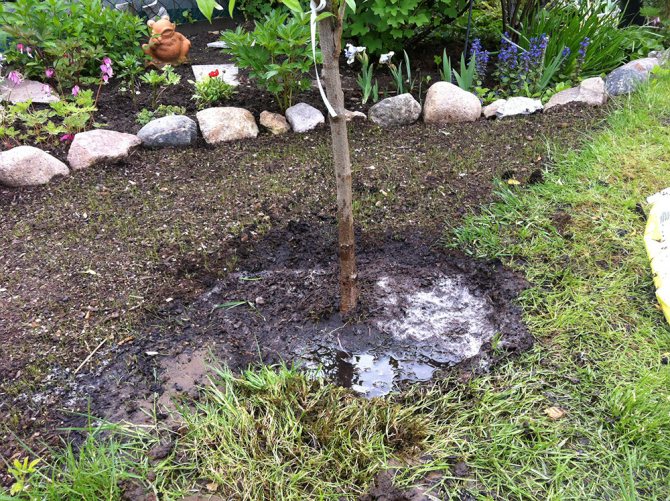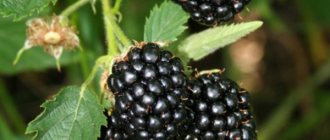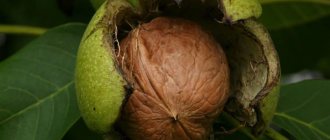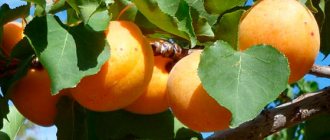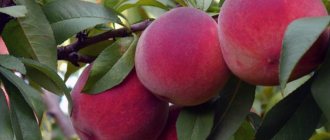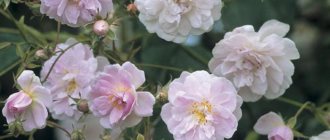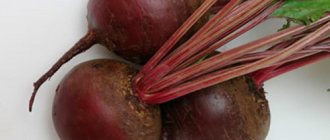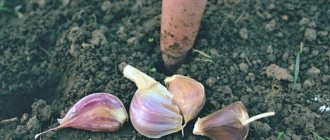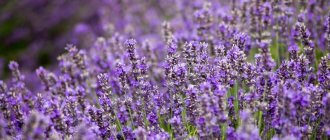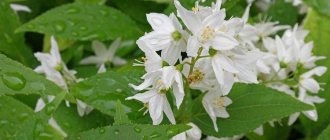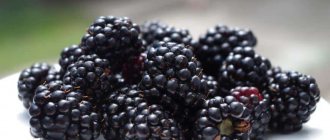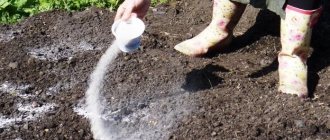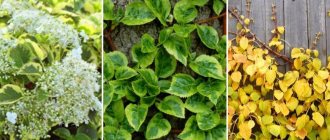Peach is a fairly popular culture in Russia, which is a relative of the almond tree. All available varieties are included in the Pink family. Some of them reach a height of 8 m, and they occupy a leading position in fruiting.
But growing a peach in the Russian climate is not so easy, especially when it comes to the middle lane. But nothing is impossible if you choose the right crop variety and take a responsible approach to the cultivation process.
Description of the peach tree
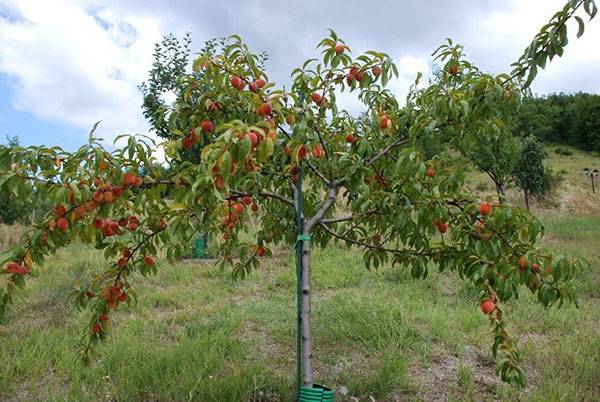
The peach tree is a cross-pollinated species. Several nearby growing varieties will increase the fruiting of each, especially if you create a conveyor of fruits from July to September, collecting specimens of different ripening periods. Keeping quality of peaches is low.
Peach trees cannot be called frost-resistant. They lose some of the roots during winter frosts -25, if they last more than three days. For a day, the roots will withstand a severe frost of 30-35 degrees. A short dormant period awakens the tree with winter growths occurring in winter.
The delicate peach is difficult to winter. The crown does not withstand frosts of -20 without shelter, while fruit buds and last year's growth die. It is comforting that the peach tree has a great self-healing ability and after a year the frozen tree will bloom again.
Evgeny SHTUKATUROV
I dreamed of growing a peach since childhood, but I always thought that because of the frost, they would not grow in our country. But gradually in the central zone of Russia, climatic conditions began to change, winters became milder, and I decided - I will try. At first I read a lot about this culture, talked with other gardeners, then began my tests.
The saplings were presented to me by friends from the Krasnodar Territory. Now I have one peach of the Dneprovsky variety - the oldest, I planted it in 2010. Another two are five years old (Dneprovsky and Vulkan), and the Inka peach is two years old.
My observations over the years have confirmed the truth: the climate for a peach is a decisive factor. This is a southern culture, therefore, in order to harvest, you need to invest a lot of work in care. But even with proper care, stable fruiting is not guaranteed - due to weather conditions. The summer of 2020 was mild, but in August, 15 kg of fruit were collected from my adult tree (Dneprovsky variety). But last summer - rainy and with an average temperature below normal - did not wait for the harvest.
Peach farming technology for each climatic zone
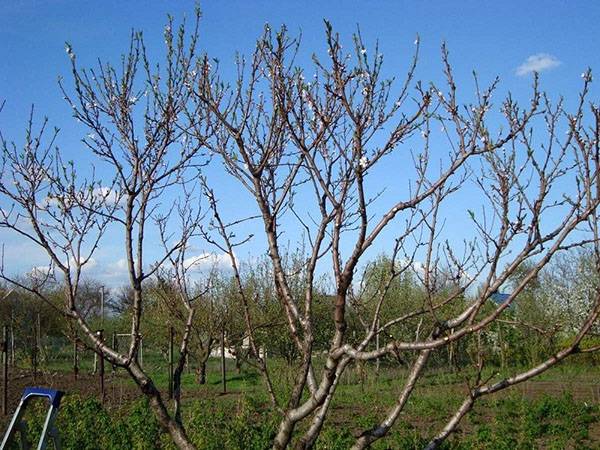

For areas with cold winters, a bush form and thickened plantings are more suitable. Here, fruit links are formed from the lower shoots. Low-lying branches are easy to cover in the winter, ensuring the safety of the fruit buds.
Only seedlings of zoned and recommended peach varieties should be purchased. A good result is obtained by gardeners by growing a tree from a local variety of peach pits.
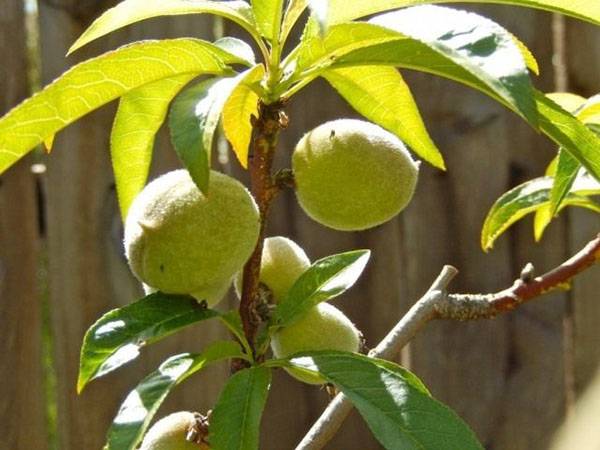

- planting dates and varieties,
- the formation of a young and fruitful tree,
- watering and feeding,
- protection against pests and diseases,
- preparation for wintering and spring awakening of the tree.
Each of these activities is based on practical techniques to help the demanding tree survive in hostile conditions.
Warming a peach for the winter
In the following winter, they arranged a shelter in the form of a volcano hut: the branches were pulled with ropes to the trunk, a frame was made of the boards with screws, sheets of mineral wool were placed on it, they were covered with polyethylene from the rain and tied with ropes from the rain, and slate was closed from the sun on the south side. A hole of 10-20 cm was left at the top - for ventilation. In general, we make the shelter from available materials at hand.
After the flower buds have been saved from winter freezing, in the spring it is necessary to save them from damping out and early germination.
For this, the shelter was removed in April, when there was still snow in some places. Victory Day was celebrated among flowering peaches. Although the culture is self-pollinated, we "pollinated" by hand - with the help of a dustpan. There were many ovaries, then some were removed.
How to grow a fruiting peach tree in the suburbs
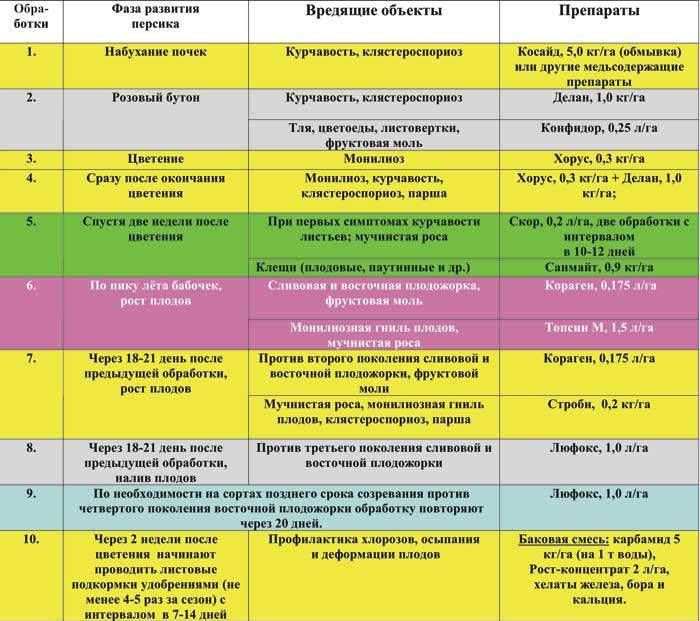

The studies carried out by the scientists of the Botanical Garden, who studied the experience of amateurs of gardeners in the Moscow region on growing peaches, led to some conclusions:
- Seedlings grown from seeds of local varieties retain their maternal qualities when taken from a native peach. Seedlings from rootstocks are sterile.
- Own-rooted peaches are highly resistant to local conditions.
- It is proposed to form a fruit tree so as to give a bushy shape, leaving predominantly young growth.
- Trees should be planted so that they can be sheltered in the middle of winter. Create a screen from the north wind even in summer.
- Use seedlings grafted onto almonds and cherry plums. Apricot Peach Jardel is an unsuccessful stock.
Gardeners and lovers of the Moscow region are advised to purchase seedlings of zoned varieties from local nurseries. So far, there are only 29 varieties, but breeding work continues.
How to care for a peach tree? An example of correct agricultural technology for the middle lane is the garden of the amateur Kostetsky. The harvest from each of the 20 peaches in 2011 amounted to 30 kg per tree. He got such results, adapting to the needs of the southerners for 20 years.
- Planting several varieties of seedlings with a distance between holes of 3x4 meters.
- Spring cutting of dry, weak, non-fruiting branches. After flowering, thinning is required, removal of excess ovary, then the fruits reach 150-200 g of weight.
- Protection - 4 times in the spring spraying with 1% copper sulfate against curly leaves, perforated spot.
Fertilizes plants all year round. After a year, 3 kg / sq. m of the area of humus in a mixture of superphosphate and potassium salt for the entire area of the garden in autumn. In early spring, fertilize with liquid organic matter annually. In winter, more than half a bucket of wood ash is poured into each hole. In the spring, when the buds swell, 300 g of complex fertilizer is introduced into the trunk circle, and 5-6 buckets of water are poured into it. After flowering, liquid 10% organic matter is introduced into the trunk circle in the amount of 3-4 buckets. In August, feeding is repeated with the addition of half a glass of superphosphate to the bucket.
In the fall, when the foliage has fallen off, each tree receives 10 more buckets of water. Then the earth is mulched with humus. There is always space near the trunk to prevent diaper rash.
Selection of materials for shelter
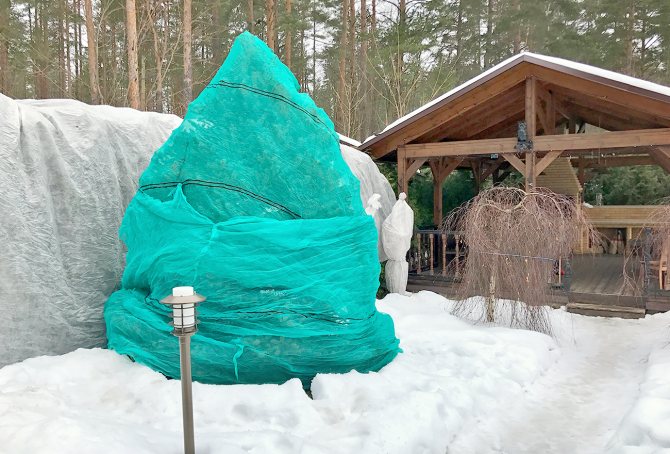

Preparing a peach for winter begins with the choice of materials for covering the seedling. Protects the crown and trunk as well as the root system. You can warm peaches for the winter with peat and sawdust. This is a complete rhizome protection. Less commonly, manure or ash is used.
For the top, burlap or plastic wrap will work. Agrofibre and spunbond are also used. The last of the listed is the most advantageous, but has a high cost.
You can cover a peach with spunbond for several seasons. The material is easy to use. Just watch a few videos to figure out how to work with it. After hiding, the spundbond creates a favorable climate for planting.
Getting a peach seedling from the seed
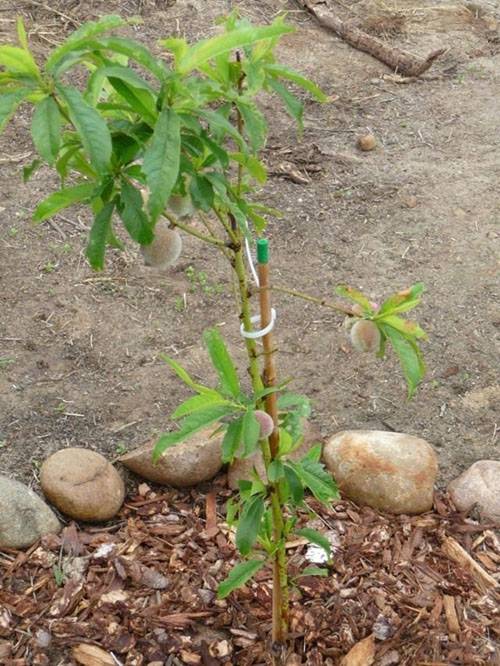

For the spring planting of peaches, it is necessary to carry out artificial stratification in winter. In a cool place, the bone is stored all winter in wet sand. In the spring, the bone will burst, a sprout will appear, it needs to be arranged in a tub.
In the fall, you can spread the seeds into well-prepared soil at a distance of 10 cm. In the spring they will sprout, by autumn they will reach a height of 1.5 m, and will give side branches. Then they are seated in prepared planting pits.
In autumn, young plants are planted without cutting off the upper branches, but the roots are slightly shortened. In the spring, on the contrary, the tops are pinched, starting the formation of the tree.
A little about planting and leaving
For planting, they choose sunny and wind-protected places, preferably from the south side of the house. Growing trees nearby should not shade the seedlings.
If you provide good drainage at the bottom of the planting pit, then almost any soil, except for waterlogged ones, is suitable for planting. It is enough to add complex mineral fertilizer and ash to good soil, and if the soil on the site is poor, then it is better to prepare it a year before planting, applying organic and mineral fertilizers.
It is better to plant in the fall before the beginning of October. I think autumn planting is preferable because stone fruit crops start growing early, and when planting in spring, we disrupt the natural development cycle. If you are worried about how young plants will overwinter, plant the seedling in a container and put it in the basement or place it in a hole until spring.
From the experience of other gardeners, I know that in the fall they bend down their young peaches to provide a good shelter for the winter. I do not bend the peaches, but I cover the root system very carefully (pictured). I use dry shelter (bags of sawdust), snow. I tried to cover it with non-woven material, made a "sarcophagus", but this experience was unsuccessful.
It is good that the peach has a high regeneration capacity and it recovers quickly. The tree easily tolerates rejuvenating pruning, so in the spring, branches damaged by frost and diseases are cut out. The places of the cuts are covered with garden varas, but it is better - with the biotechnical agent RanNet (composition: latacryl-3m, copper sulfate, humate), resin-based resin is also used.
Spring is the most crucial period in peach care
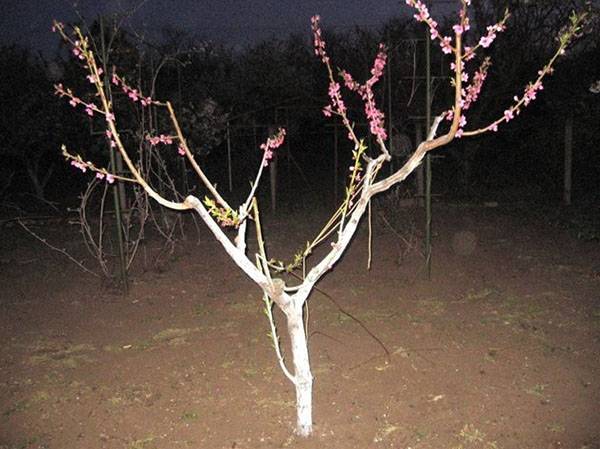

Caring for a peach in spring is the timely release of branches and roots from the protective cover so as not to create diaper rash in the trunk. At the same time, protective measures should be taken, feeding should be carried out in accordance with the schedule. As soon as the flower buds begin to swell, within 3 weeks, the time for the formation of the crown comes for the gardener. The event is responsible, requiring practical skills and well-sharpened tools. How to properly prune peaches in spring, watch the video for beginners:
The main goals of spring pruning are:
- rid the tree of fattening branches,
- free access to the sun's rays for fruiting shoots,
- remove old branches on which there are already few fruitful shoots.
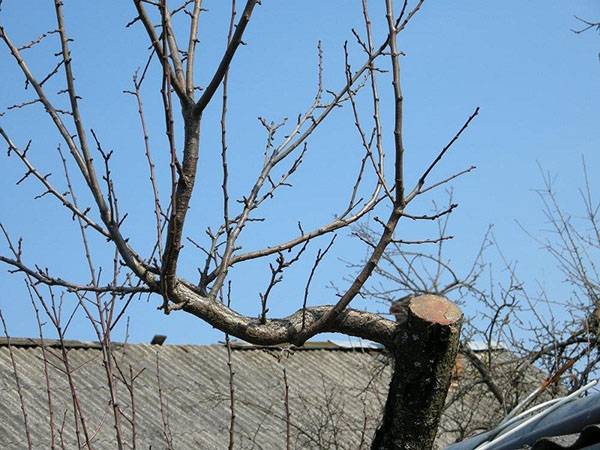

Only a well-groomed, strong tree can decorate the garden and bear delicious aromatic fruits.
Peach pruning in autumn
Elimination of peach branches that have grown during the period must be carried out in order to increase the future yield, so that the crop will favorably survive a strong drop in temperature.
Peach is a plant that requires pruning at different times of the year:
- Spring - held "on the rosebud"... For old trees, a rejuvenation procedure is required. Young seedlings 2-3 years old are pruned to form a crown. It is also advisable to restore - to cut off all the sprouts bruised by frost.
- Summer - thinning of grown young shoots, which contribute to the thickening of skeletal branches. Removal of dry branches that were missed in the spring, beaten by pests and diseases.
- Autumn - sanitary cleaning of diseased sproutsinfested with pests. Elimination of branches that broke off under the influence of weather conditions and the severity of the crop.
Each period of elimination of excess overgrowth is important in its own way. For quality growth and good fruiting you need to monitor the condition of the fruit tree throughout the year.
Autumn pruning of peaches is recommended immediately after the harvest, but not later than mid-October. In addition, you need to choose a dry, calm and sunny day. In humid weather conditions, the atmosphere favorably affects the attachment of infections and bacteria to fresh sections.
Note! Pruning the peach in the fall is essential to prepare the plant well for wintering. In addition, all root stepchildren are eliminated. Harmful insects that can crawl from an infected seedling to a healthy peach can hibernate there.
Removal of excess growth is carried out only clean, disinfected with potassium permanganate garden tools... For different branches, a certain device is taken: a garden saw, a knife and a pruner.
The following procedures are included in the autumn peach pruning scheme:
- The upper branch is cut at the very base.
- The upper branches from the lateral side are removed along the apex, while leaving 2-3 eyes on the lower growth.
- It is required to thoroughly thin out the shoots growing inward so that the skeletal branches are not thickened, and future fruits have a space where to grow and be saturated with sunlight.
- Diseased, dry or mechanically broken shoots are removed completely.
- Thin and long green shoots that have not had time to ripen should be shortened by 50%.
Young peach seedlingplanted for permanent residence, the crown must be formed already in the first autumn... The top of an annual peach is trimmed so that the tree is 50 cm from the ground.
At the 8-10th year, the peach is recommended to rejuvenate... To do this, carry out the following actions:
- Broken and dry branches are cut.
- Fruit-bearing shoots, on which the formation of fruits is not observed, must be cut off by a third of the entire length.
- Control the growth of the peach so that it does not exceed 3 meters.
- All skeletal branches must be cut to the level where they were at the age of 3-5. The stump is made near a young and strong branch. It will further become a continuation of the skeletal one.
- If the forecast for the winter is disappointing, with severe frosts and heavy rainfall, it is worth removing all thin and green branches.
Important! Not all varieties need to be pruned according to the same pattern; some require special care. Such types of peaches as Boxer, Royal, Autumn Blush, Glory, Skif, Krasnodarets are recommended to be additionally trimmed using "household" pruning.
A large number of fruiting buds are formed on the branches of these trees. During ripening, the fruits greatly burden the branch and prevent each other from fully developing and being saturated with sweetness.
Since September, part of the summer growth is shortened - weak and undeveloped shoots. They need to be cut into 3 buds or 15-25 cm. Fruiting branches are cut off 30-40 cm from the total length. They should have a maximum of 8 previously fruiting buds.
The peach is the fruit that no one who is engaged in self-harvesting can pass by. Juicy pulp and real nectar attract true connoisseurs of delicious fruits. Gardeners know that the peach tree needs careful maintenance in the fall. After all, this is the key to a new bountiful harvest.
The preparation of the peach for the onset of cold weather begins with the preparation of the soil. The peach orchard is dug up as late as possible, the lumps are not broken, this is done so that the pests that go deep into the soil die. It is best to dig up the site with a shovel. They dig on a full bayonet, very tightly. The degree of exposure to water and low temperatures depends on this. Frost, loosening the dug-up layer, allows moisture to seep into the ground without obstacles.
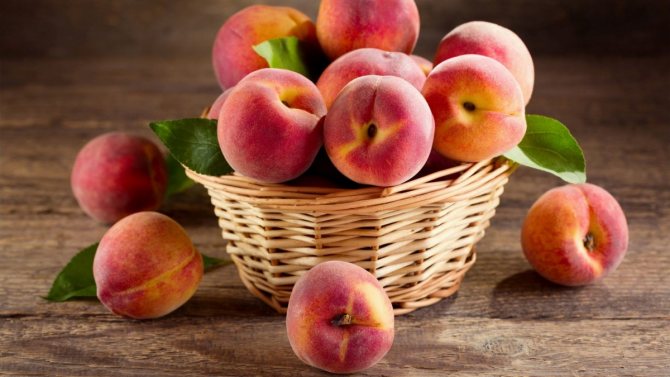

Fresh articles about garden and vegetable garden
Peach varieties growing in the Moscow region
The Moscow region is characterized by a temperate climate with rather warm winters, frosts in the spring and relatively rainy summers. When choosing a suitable variety, it is necessary to focus on the time of its ripening.
In the Moscow region, peaches are harvested at the beginning of summer. There are also many mid-season varieties. All of them must be winter hardy, capable of surviving a sudden drop in temperature. The varieties must be specially bred for cultivation in the Moscow region, so it is advisable to purchase them in specialized nurseries.
The most suitable varieties for growing in the Moscow region are considered to be:
- Redhaven - on a tree with a lush crown, giant peaches up to 150 g often grow with a dense red-yellow, slightly pubescent peel, reddish veins are visible on the elastic pulp, the variety came from America, every season you can remove up to 100 kg of peaches from one tree;
- Kiev early - the average weight of one fruit is 80 g, but sometimes it gives large fruits weighing more than 100 g, the oval shape of the fruit and almost transparent flesh are characteristic;
- Greensboro - large fruits, the weight of which is usually 120-130 g, a dimple is visible on the uniform surface of fruits with a predominant yellow color, the variety is resistant to diseases and cold, but the crop often deteriorates during transportation;
- Favorite Moretini is a self-fertile species, begins to bear fruit 2 years after planting, medium-sized peaches have juicy and aromatic pulp, from which it is difficult to pull out a stone, the crop often suffers from frost and pests;
- Early champion - as the name implies, the harvest ripens early, annually you can get up to 70 kg from a tree, green blotches and pubescence are noticeable on ruddy peaches;
- The white swan belongs to mid-season varieties ripening by August, the average fruit weight is 150 g, the name is explained by the white color of the skin and flesh, which is sweet in taste, the variety easily survives the lack of watering;
- Golden Moscow is one of the best varieties among mid-ripening ones; rather large peaches with velvety skin and golden flesh grow on the bush, one tree can produce up to 50 kg per season.
Nectarines
Many gardeners, even without realizing it, plant nectarines on their plots. For them, there is no difference between them and peaches. There is a lot in common between cultures, they are distinguished by only one recessive gene, but nectarines have their own varieties, which are also suitable for growing in the Moscow region. Nectarines are sweeter than peaches, they have a high content of ascorbic acid.
The most successful for the Moscow region are the following varieties of nectarines:
- Big Top - oval fruits covered with a ruddy skin, inside of which a juicy pulp is hidden;
- Crimson Gold - the average weight of one specimen is 130 g, yellow fruits tolerate winter well, gourmets like the fibrous pulp;
- Flavor Top - begins to bear fruit early, large yellowish nectarines with sugary pulp.
Features of the region
The Moscow region has a temperate climate, which is characterized by mild winters and humid summers. Choosing the right peach variety is relatively easy. In this case, it is worth considering the type of rootstock and the ripening period of the fruit.
Early varieties grow well in the region. It is also permissible to cultivate mid-early plants. They must be frost-resistant. In order not to be mistaken with the choice of culture, it is worth purchasing trees from specialized nurseries that sell zoned varieties.
Landing
Peaches in the Moscow region can be grown even in its northern part, if you do not neglect simple recommendations:
- the most suitable time for planting is the beginning of spring after the snow melts, mainly in the Moscow region this occurs in March, with autumn planting there is a high probability of freezing;
- the best place for a peach on the site is on the south side;
- there should be no groundwater nearby;
- strong northerly winds should not reach the landing site;
- the best soil is carbonate loam with low acidity;
- there must be drainage in the ground in the form of brick chips;
- apple trees, pears, tomatoes should not grow in the immediate vicinity of the peach.
Before planting, the land should be carefully dug up, weeds should be destroyed, if necessary, then the acidity should be reduced with dolomite flour. It is necessary to dig a hole that has approximately the same depth and diameter of 50 cm, if the soil is fertile, then the diameter and depth should be increased. It is desirable that the spring planting hole be dug up in the fall. Then you need to add fertilizers there:
- superphosphate;
- humus;
- ash.
If there are several seedlings, then the distance between them should be 3-4 m. Immediately you need to water the plantings and mulch the ground with grass or wood shavings.
Growing technology
Proper planting and care, these two factors are the key to the successful cultivation of peach crops in the Moscow region. Moreover, if everything is done correctly, then even in the northern part of this region, this culture can be successfully grown. And in order to harvest good harvests annually, the following agrotechnical techniques should be followed:
- Before wintering, you need to take care of the safety of the culture, carefully covering it with dry straw and tying the trunk with burlap.
- Starting in May, try to water the peach abundantly with warm, settled water a couple of times a month. If the summer is dry, feel free to increase the amount of moisture.
- Feed the crop regularly, add nitrogen agents to the soil in the spring, which help to intensively build up the green mass.
- In the summer, feed the peach with potash fertilizers and organic matter.
- In the fall, make sure that the tree is saturated with phosphate fertilizers before wintering and add rotted humus as mulch, which will feed the peach root throughout the winter, and also keep it from frost.
- If the tree pleases with a spreading and lush crown, make a kind of props for the fruiting branches so that the branches do not break from the weight of the harvest.
- Perform preventive sprays regularly against infestations of parasites and infections.
In fact, caring for a peach crop outdoors is not difficult. The main thing is not to forget to carry out all the above manipulations in a timely manner. And of course, try to regularly inspect the trees for timely detection of diseases or insect parasites. Performing these simple manipulations will definitely give the result in the form of juicy fruits.
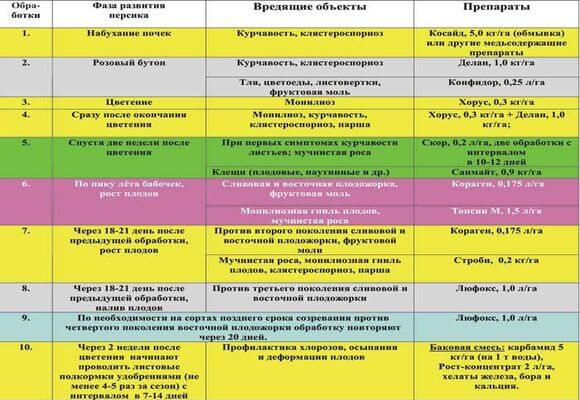

Care
To grow a peach tree that annually pleases its owners with a bountiful harvest, you must follow the care rules exactly. The culture needs abundant watering - 40 liters at a time, on hot days this rate should be increased. For young trees, the more often watering, the better; mature trees especially need moisture during flowering and fruiting.
It is customary to start fertilizing the next year after planting. During the first year, the stocks of substances introduced into the pit remain. Further feeding is carried out 3 times a year:
- nitrogen-containing fertilizers are needed in spring;
- in summer and autumn, the fertilizer must contain potassium and phosphorus.
With a plentiful harvest, props should be prudently installed under the branches of the tree, but most importantly, the fruits must be removed on time. Another important procedure is pruning in the fall, when 3-4 shoots are left from below, so the tree is ready for winter.
We must not forget about a reliable shelter in the form of spruce trees, foliage, boards. Formative pruning can be done every year, leaving no more than 5 branches. Peach trees in the Moscow region are rarely attacked by harmful insects and rodents, but preventive treatments with special substances and burlap cover will not damage.
As you can see, it is not difficult to grow a peach in the Moscow region, if you stop at a specific variety and try to do everything so that the tree blooms and actively bears fruit, creating all the conditions for this on your personal plot.
Diseases and pests
When growing a peach, you can face various difficulties. One of them is considered to be infection with diseases or pests.
Fruit rot
This disease is accompanied by a severe decrease in yield. The fruits are covered with many gray pillows. Treatment with Topsin M or Teldor will help to avoid this. This is done before flowering and during fruit development.
Powdery mildew
This is one of the most dangerous diseases. In this case, shoots, leaves and fruits suffer, which are covered with bloom. Topsin or Topaz will help to cope with the problem. These products are used at the end of flowering.
Moniliosis
The disease occurs in spring, during flowering. The infection is spread by harmful insects. To prevent its development, trees are treated with Horus, Topaz, Topsin.
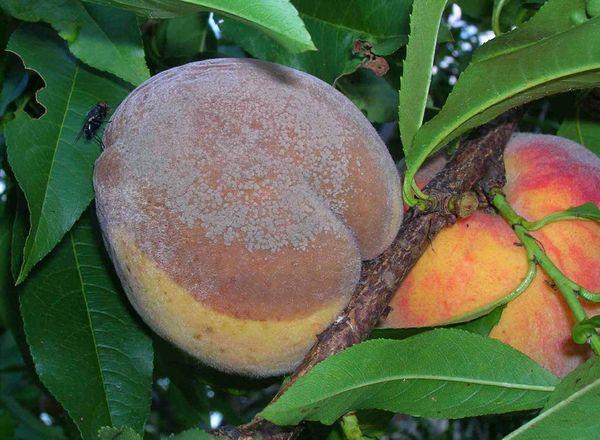

Clasterosporium disease
This dangerous disease affects the entire aerial part of the plant - leaves, shoots, flowers. Before the start of sap flow, it is worth cutting off all the affected elements of the tree. Slices should be treated with lime mortar. Copper or iron vitriol is added to it.
Aphid
These insects infect the back of the leaves. At the first sign of infection, the plant is treated with strong insecticides.
Mites
These small insects attack the bark of the tree and weaken it. Acaricides help to cope with the problem.
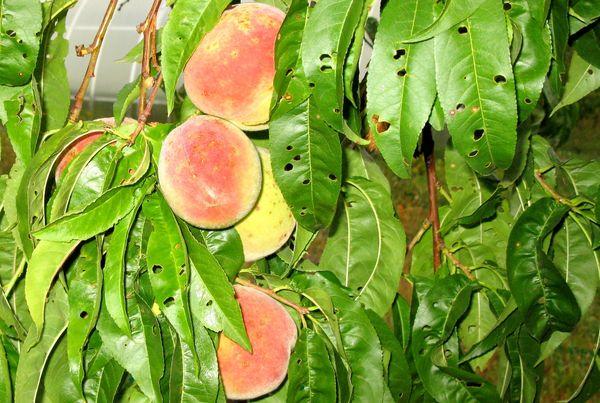

Fruit moth
It is a small dark gray butterfly. Its caterpillars attack the buds and young shoots. Pruning affected shoots helps to avoid this. It is also worth loosening the soil under the crown.
Weevils
These beetles infect buds, flowers and buds. To avoid problems, the tree is treated with chemicals before the buds swell.
Eastern moth
These are small butterflies whose caterpillars attack shoots and ovaries. To avoid such problems, it is worthwhile to apply insecticides on time.


Frost-resistant peach varieties for the Moscow region
Since the peach is a thermophilic plant, the choice of the variety must be taken responsibly. Indeed, for its cultivation in regions with a harsh climate, not all species are suitable. Therefore, gardeners should think about the choice and planting of frost-resistant peach varieties.
These include:
- Collins. Juicy and large fruits with a sweet and sour taste amaze even sophisticated gourmets. The variety is not only suitable for growing in the Moscow region, but also resistant to powdery mildew, curliness, spring frosts.
- Redhaven. Excellent taste, presentation and yield - that's what motivates gardeners to plant a tree of this variety on their site. Recommended for breeding in the North Caucasus region. Plant height - 5 m, as seen in the photo. The fruit has a bright orange pulp with raspberry veins. Among the shortcomings, only instability to defeat by curl is distinguished.
- Kiev early. Peach is a capricious crop, but this variety very quickly adapts to the climate of Russia, recovering from prolonged frosts. It was bred back in 1939. The weight of one fruit is 110 g. Early maturity, winter hardiness, resistance to klyasterosporia and powdery mildew are its main advantages. However, peach pits do not separate well from the pulp. Early Kiev is subject to curliness.
- Kremlin. It adapts well to any cultivation conditions. The fruits are quite large. Their average weight is 150 grams. Differs in average resistance to drought. Peaches have not only a distinct taste, but also an aroma.
- Cardinal. It is a popular medium-ripening variety. Fruit weight - 140 gr. The pulp is juicy and fleshy. The first harvest of fruits is harvested in the third decade of July. The cardinal is distinguished by its yield, good winter hardiness, and disease resistance.
A little about the plant
Peach is a thermophilic and light-loving stone fruit culture. In winter, it can withstand frosts of 20-25 degrees. But in the spring from frosts, a peach can suffer significantly, especially if they catch it during flowering.
Despite the fact that the plant is southern, recently gardeners in the central part of Russia and in more northern regions have been able not only to grow this crop, but also to receive fruits.
The peach begins to bear fruit in the second or third year after planting and can produce a crop for two to three decades. It blooms depending on the region where it grows, in the Kaluga region my peaches begin to bloom in late April - early May and until mid-May. The fruits ripen until the end of September.
Peach varieties with photos and descriptions
Of course, this is just a small fraction of the peach varieties. There are quite a few of them, so every summer resident can choose several types of heat-loving southern culture, and plant on his site the one that is most suitable for growing in the middle lane, namely:
- Golden Moscow. It was bred by breeders in the Nikitsky Botanical Garden. The mass of some fruits, according to photos and descriptions, even reaches 200 grams. The variety is resistant to frost and cold weather, it is immune to powdery mildew. Recommended for growing in the Moscow region. Keeping quality is another indisputable plus of this type.
- Lebedev. A medium-sized tree with a wide oval crown annually pampers gardeners with tasty and juicy fruits. The first fruits appear at the beginning of August. Ideal for conservation. The tree is not susceptible to clasterosporium disease.
- Flamingo is a medium-ripening peach variety. The fruiting period begins 3 years after planting. The average weight of one peach is 170 grams. Harvested in late July or early August. The bone does not separate from the pulp. The frost resistance zone is 23 degrees with a minus mark.
Other peach varieties that are suitable for cultivation in central Russia include Early Fluffy, Juicy, Fairy Tale, Laureate, Harmony, Early Jubilee, Early-85, Start, Refreshing.
- Peach disease: photos and how to treat?
Quote from Cheremshina_2
Technology for growing a peach in the form of a bush in central Russia and the Moscow region
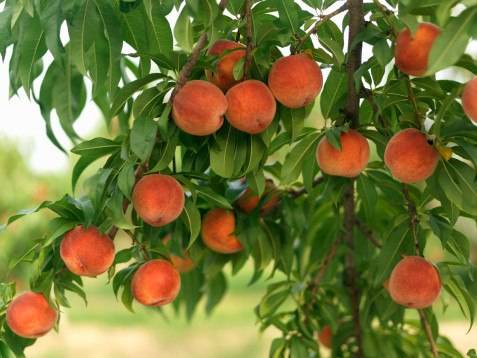

The technology of growing a peach in the form of a bush in central Russia and the Moscow region Further words of the author
Growing peaches in the Middle Lane is not easy. Whatever you say, a tree with a finicky character. But what if you offer him to grow in the form of a bush?
Peach is a painstaking culture. And to get the fruits, you have to work hard. In our region, it is grown mainly with a tree, in one trunk. But my peach ordeal for years has shown that this is wrong. Good fruiting can only be achieved from a shrub. I have been in the peach business for over 16 years. And during this time, you can't count how many trees I lost. And then one day, after another failure, I cut down four practically dead peaches of my favorite varieties - Early and Kiev early. And, lo and behold, everyone gave abundant root shoots. In August, from this undergrowth, I formed bushes. On two plants he left 4 branches, and on the other two - 7. The next year the peaches bloomed and gave a small harvest. This was in 1997. Since then, they bear fruit annually (they missed only 2006). But I was sure that peach trees live no more than 6 years, and then die. Therefore, he planted seeds every year and renewed old ones with young seedlings. But now I mold them all with shrubs. Forming secrets
The peach molding process is as follows. I do not remove the lower buds of the seedlings grown from the school. Shoots grow out of them. I form a bush of 2-3 branches, and in the second or third year they bear fruit. Fruiting lasts a maximum of 3 years (as a rule, the branches begin to be affected by gum flow). After that, I cut off all the branches in the spring at the level of the root collar.Over the summer, shoots grow, and in July-August I begin to form a bush, leaving from 5 to 8 well-developed branches that bear fruit for 1-2 years. Every spring I check the condition of boles and skeletal branches. I cut branches affected by clasterosporium and frost to the base, that is, to the root collar. For fruiting, I leave 4-5 branches and 2-3 one-year-olds for replacement. I repeat this process every year. An adult bush has 7-8 branches, of which 5-6 are fruiting, 2-3 are used for replacement. Thus, the bush is completely rejuvenated within 2-3 years. I do not perform cutting (chasing). The Early variety is best suited for this method of growing peaches. It is less susceptible to clotterosporia, curliness and more frost-resistant. And it ripens early. We harvest the first fruits on July 25-26, and the last ones by August 10. With a large number of fruits on a branch (up to 30 or more), the peach turns out to be small, weighing 50-90 g, and if peaches are not more than 10 pieces, their weight increases to 140 g. The fruit is yellow-brown with a bright red tan, the pulp is yellow, juicy , sweet, with a light, pleasant sourness. Its skin is slightly pubescent, when fully ripe, it is well removed, the stone is small, easily separated from the pulp. In 2005, a nine-year-old peach bush yielded more than 30 kg of fruit, and the rest - from 5 kg to 20 kg. My second favorite variety is Kievsky early. But, unfortunately, it is more prone to gum flow, it is strongly affected by curliness and the yield is lower than that of the Early variety. But the fruits are large - from 100-160 g and more. Ripens in early September. In total, I have grown from seeds more than 100 seedlings of the Early variety, 50 seedlings of the Kievsky early variety. Planting and leaving
I plant the seeds during the harvest. Early - in early August, and Kiev early - in September. Seedlings appear in May of the next year. I grow seedlings in a school for a year. At the age of one, with a lump of earth, I plant it in place. I prepare holes for planting in the summer. First, I prepare the fertilizer: I take one and a half buckets of chicken or two buckets of rotted cow dung and half a bucket of ash, mix everything with vegetable soil and fill it with water. Then I water each hole 2-3 times and leave it until spring. I water the planted seedlings and fruiting bushes during the summer 5-6 times so that the water soaks the soil by 40-50 cm.In July I feed it with a complex fertilizer, and in the fall I put half a bucket of rotted chicken or a bucket of cow dung under each fruiting bush. Several times during the season I carry out the treatment of shrubs with disinfectant solutions. In early spring: a solution of diesel fuel and soap. Before flowering: Bordeaux liquid (3%). After flowering: I dissolve in 10 liters of water 50-70 g of soda ash, 20 g of copper sulfate, 10 g of boric acid, 1 g of manganese, 10 drops of iodine. During the ovary and ripening of the fruits: add an infusion of herbs (tansy, yarrow, celandine, chamomile, nettle) to the previous solution. By the way: Peach juice helps to remove toxins from the body. In addition, half a glass of juice a day will help normalize heart rate and improve blood quality.
The best varieties suitable for the region
The experience of gardeners who practiced growing peaches in the open field in the Moscow region allows us to conclude which varieties are best suited for these weather conditions and bring yields.
Favorite Morettini
The variety appeared as a result of the work of Italian breeders. Fruiting occurs 2-3 years after the seedling was planted. Up to 30 kg of peaches are removed from each adult tree. Commodity and taste indicators were highly appreciated.
Fruits ripen early, weigh up to 115 g. The shape of the fruit is round, slightly elongated. When ripe, they acquire a yellow velvety color with a slight blush on the sides. The pulp is juicy and has a strong aroma. Pulp with bone is difficult to separate.The crop is not suitable for long distance transportation. Peach is prone to powdery mildew disease and needs preventive treatments.
Greensboro
The tree is medium in size. The variety is self-fertile, columnar. The first crop gives in 3 years after planting the seedling. An adult tree produces up to 60 kg of ripe peaches per season. The crop is not suitable for long distance transportation. The plant is frost-resistant, but requires preventive treatments for diseases.
Fruits grow up to 130 g in weight. They are oval in shape, slightly compressed from the sides, blunt apex, there is a small original fossa. When ripe, the fruit acquires a greenish-cream color, one quarter of the area is covered with a blush. The taste is classic, sweet, with a barely perceptible sourness, strong aroma. The bone is poorly separated from the pulp.
Redhaven
Medium-sized tree with a round crown. The fruits are large, oval-shaped, unequal. When ripe, they acquire a yellow color with a red blush, pubescent. The pulp is firm and has an excellent taste. American breeders worked on the breeding of the culture, but it shows excellent results in the climate near Moscow.
The variety has increased frost resistance and immunity to curliness, but is prone to infection with fungal diseases. Timely preventive measures help to avoid infection by viruses and damage by pests. A mature tree produces up to 100 kg of high quality peaches.
Kiev early
Medium-sized tree with a wide rounded crown. Fruits grow up to 90 g in weight, their shape is oval, at the top there is a characteristic beak. Ripe peaches are creamy and slightly pubescent. The taste is sweet and sour, the smell is classic, strong, the flesh is transparent. The bone is difficult to separate.
An adult tree produces up to 50 kg of fruit. The plant's resistance to powdery mildew and causative agents of klyasternosporiosis is high. It does not tolerate drought or excess moisture in the soil. The tree is prone to curliness and needs preventive treatments.
Collins
The variety is self-fertile, grown as a mid-early one. It was bred by American breeders, but it is successfully cultivated in the Moscow region. Peaches weigh up to 150 g. The taste is pleasant, with a barely noticeable sourness. Ripe fruits are red-yellow in color with small dots. The crop must be removed from the tree in a timely manner, otherwise the branches may break. Fruit ripening does not occur simultaneously.
An adult tree brings up to 50 kg of harvest. Frost resistance and immunity to powdery mildew and curliness are high. Peach requires timely irrigation, top dressing, pruning and crown molding.
Early champion
The tree is tall, spreading, thickened crown. Each adult plant is harvested up to 70 kg. Fruiting is regular. Peaches grow up to 160 g in weight. When ripe, they become greenish-cream in color, covered with a blush throughout the entire area. The content of sugars and acids in the fruits is increased, the taste characteristics are excellent. The bone with the pulp does not separate well.
Juicy
The peach is self-fertile, self-pollinated, large-fruited. Capable of self-overload due to the abundance of fruits. The tree is tall, spreading. The mass of one fruit reaches 200 g. Fruits are oval in shape and greenish-cream color with a bright blush. The pulp is characterized by a strong classic aroma and harmonious taste. The bone and flesh are difficult to separate. The plant shows increased resistance to fungal diseases. The variety is winter-hardy. Up to 70 kg of fruits are removed from each adult tree.
Golden jubilee
American scientists worked on the breeding of the variety, but it is cultivated with great success in the conditions of the Moscow region. Peaches are round in shape, slightly flattened from the sides. When ripe, they acquire a golden yellow color with a pronounced blush and slight pubescence.The aroma is strong, the taste characteristics are at a high level. The bone and flesh are difficult to separate.
The tree can grow to medium size, the crown is branched. Fruiting is regular. Each adult plant produces up to 50 kg of fruit. Average frost resistance.
White Swan
Medium early self-fertile variety with increased drought resistance. The crown is not spreading. Fruits reach a weight of 150 g. They are suitable for transportation and short-term storage. Each adult tree gives up to 60 kg of harvest. Peaches are broad-oval, with a sweet taste and a light honey flavor. The pulp and bone are not separated well. The variety is frost-resistant, with good resistance to major diseases. Flower buds withstand recurrent frosts in spring.

